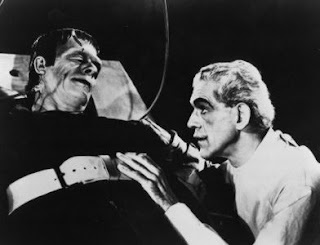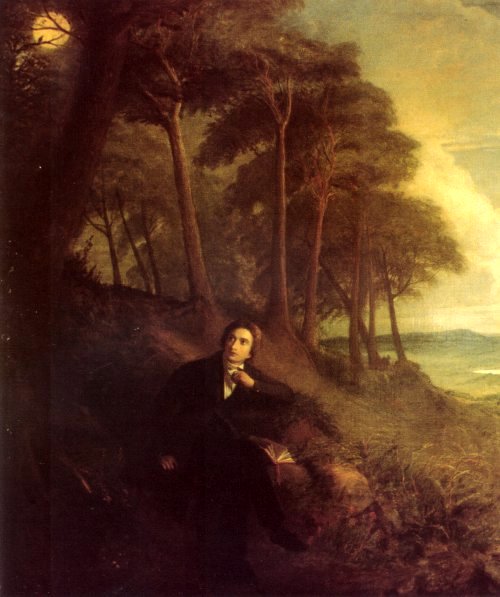After many failed attempts at posting my blogs, here is one of my two class blog posts! I had intended to post this after we had discussed A Sicilian Romance in class, and our thoughts on casting the characters in the novel for a movie. Please feel free to comment. Thanks! Rachel
After
discussing in class how we would cast A
Sicilian Romance, if a movie adaptation should ever be made, I couldn’t
help but want to delve more into the idea of a movie adaptation of this novel. Film
adaptations have always fascinated me. The idea of attempting to condense a
novel, written in thousands of words, into a screenplay, that is only able to
last at maximum three hours, is an extremely daunting idea. However, the market
for such films is ever growing with adaptations, such as The Great Gatsby, ready to hit theatres as soon as this upcoming
December. It seems to be a pop culture phenomenon, the adapting of novel for
film, but what is lost along the way in these condensed, modernized versions is
the eloquence of the original text, and intricacy the authors intended to be
understood. Having these thoughts at the back of my mind, coupled with our in
class discussion of creating a Hollywood adaptation of A Sicilian Romance, I felt compelled to plot out how I would not
only cast this film, but also the ways in which I would facilitate a screenplay
production that would allow for Ann Radcliffe’s words to truly shine.
As
a jumping off point, I utilized all of your brilliant ideas, and thought of the
casting each of you had decided upon for the characters of this novel. Below is
the ideal casting for our class:
English 590.04H A Sicilian Romance Cast
Louisa Bernini: Taylor
Swift
o
America’s Sweetheart
o
She has a sweet disposition and a genuine nature
o
Her music speaks of being wronged by men
Cornelia de Veneza: Monica Bellucci
o
Italian descent
o
She is a motherly type figure
o
She is young, but not too young
o
The roles she typically plays are on the darker
side
Duke de Luovo: Aaron
Eckhart
o
In The
Dark Night, the character he play was very evil and decieving
Abbott of St. Augustin: Ian McShane
o
Usually portrays characters who are slightly a
little off, or a bit of a creep
Ferdinand: Orlando
Bloom
o
He is dark and attractive
o
Sometimes can be brash
o
He is good at playing characters who are
passion-stricken
o
He typically goes against the grain
Hippolotus: Ryan
Gosling
o
He is handsome, graseful and masculine
o
He is good at playing romantic and mysterious
roles
Julia: Felicity
Jones
o
She is passionate and gentle
o
She really looks innocent
Madame de Menon: Julia
Roberts
o
She is very experienced
o
A motherly type figure
o
She is able to pull off characters who have been
through a lot
o
She would make for a great instructor
Maria de Vellorno: Angelina Jolie
o
She is older and beautiful
o
She did steal Brad…
The Marquis of Mazzini: Alan Rickman
o
He looks very sinister
The
characters that you each came up with certainly have their pros and cons for
each of their castings. I think before I delve into my ideal casting, I need to
explain the ways in which I would transform Radcliffe’s words into a
screenplay, and the ways in which I would provide visual image to help portray
my concepts. First, and perhaps
most important, is the selection of a setting. One of the most poignant aspects
of this novel is the way in which Radcliffe utilizes scenery in order to
further the reader’s understanding of major plot points, connect plot points to
one another, as well as utilizing certain scenery as symbolic representations
of the story line. The ruined castle, once belonging to “the noble hours of
Mazzini” is where it all begins. A crumbled ruin, stones missing, crumbled, and
destroyed. The beauty, elegance and elaborate nature of a castle is gone, the
ruble as the only reminder. I picture filming taking place somewhere in Europe,
perhaps at some of the palaces and castles in the Baltic region, such as Riga,
Rundale Cesis, Turaida, or Bauska. Below is a picture of the Turaida castle.
While this castle seems to be better kept than I envision, the castle and its
run down general appearance, and its elaborate size, would work out very
nicely.

As
far as a screenplay of the novel goes, I understand how it is difficult for
screenplay authors to fully include a novels breadth while still appeasing
audiences with a movies length, visual appeal, and star power. Most
importantly, I want to make sure that my screenplay follows the events outlined
in A Sicilian Romance, including, but
not limited to, the ways in which
the marquis leaves Julia and Emilia to live within the estate, exemplifying the
complexities of love, as shown through the eyes of Julia, and the final
realization bestowed upon Ferdinand by the marquis.
In
the future, I would be very interested to see if this novel will make it to the
big screen. The setting and casting seem to be the simple part of the equation,
while the screenplay is the more difficult and complex aspect. I cannot begin
to imagine the work that must go into writing and creating a screen play, but
from the few things I mentioned above, I can only assume that it is an
extremely daunting task. As I close this post, I leave you all with my thoughts
on casting my cinematic version of A
Sicilian Romance.
Rachel Edelman’s A Sicilian Romance Cast
Louisa Bernini: Dakota
Fanning
o
Can play both types of roles – those who require
a sweet disposition, and those that require a rougher edge
o
She is very able to portray a character who has
a more complex inner self than the outside self portrays
o
Old enough to portray Ferdinand’s first wife,
but young enough to still show that naïve nature of a young age
Cornelia de Veneza: Monica Bellucci (I would stick with this casting for the same reasons)
o
She is of Italian descent
o
She is a motherly type figure
o
She is young, but not too young
o
The roles she typically plays are on the darker
side
Duke de Luovo: Heath
Ledger (if it was possible)
o
Along the same lines of the casting decided on
in class, his porttrayl of the Joker, with the convoluted sense of right and
wrong fits perfectly
Abbott of St. Augustin: Ewan McGregor
o
His character in Angels & Demons portrayed the Catholic Church in a bad light,
which is along the lines of what this character was intended to do in the
novel.
Ferdinand: Josh
Hutcherson
o
He is dark and attractive
o
With his casting in The Hunger Games, his mysterious nature and the ways in which he
goes against the grain would give a perfect combination of morality to this
charater
Hippolotus: Zac
Efron
o
He is handsome, graseful and masculine
o
He is good at playing romantic roles
o
His youthful innocence connect with the novel
o
He has played roles that have a little more
substance to them, and would be able to create an inner sense of character for
Hippolotus
Julia: Alexis
Bledel
o
She is passionate and gentle
o
She really looks innocent
o
The roles that she has played in the past are
always connected to a love that cannot be
Madame de Menon: Meryl
Streep
o
She is very experienced
o
A motherly type figure
o
Her innate ability to give her characters
multiple layers of complexity
o
Her wealth of knowledge inherently makes her a
face of being a mentor
Maria de Vellorno: Angelina Jolie (I would stick
with this casting for similar reasons)
o
She is older and beautiful
o
She did steal Brad…
o
She has played many characters who need to be conniving
and sneaky with their actions
The Marquis of Mazzini: Anthony Hopkins
o
He is an older actor
o
Some of his more memorable roles have been
sinister, evil, and at some times sociopathic
o
He has been in movies based off of novels or
plays, like Titus









